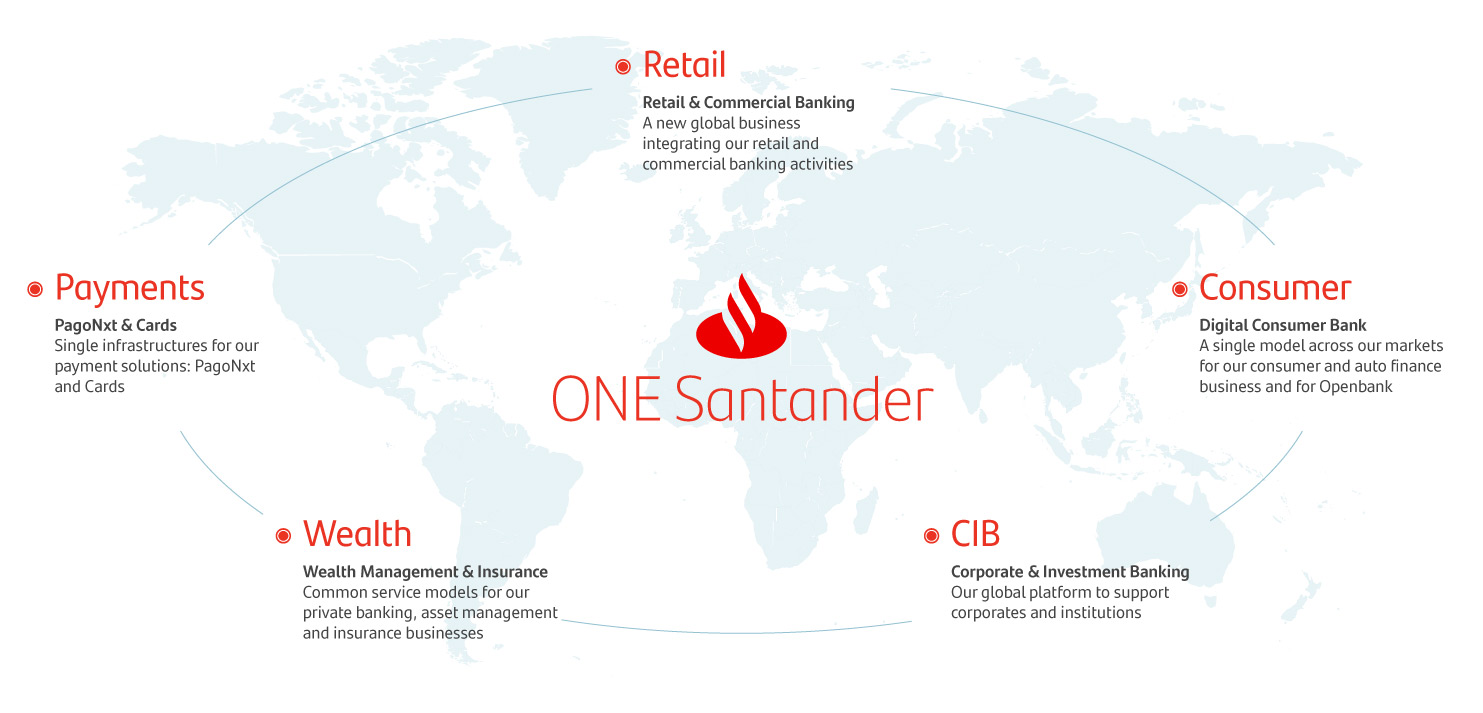Santander is a bank, founded in 1857 and headquartered in Spain. We are a global bank organized around five global businesses, with a meaningful presence in 10 core markets in Europe and the Americas.
We are one of the largest banks in the world by market capitalization, listed on stock exchanges in Spain, Mexico, Poland, the United States, and the United Kingdom. We provide service through our 8,011 branches and online channels that offer banking products, operations and services to individuals, SMEs, and corporates.
We have 176 million customers, 204,330 employees and close to 3.5 million shareholders around the world. As a responsible bank, we focus on areas where our activity can have the greatest impact and support an inclusive and sustainable growth.









